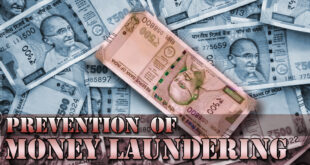In December 2022, Finance Minister Nirmala Sitharaman told Parliament that banks had written off bad loans worth ₹10,09,511 crore during the last five financial years. A National Asset Reconstruction Company Ltd. (NARCL) was announced in the Union Budget for 2021-2022 to resolve stressed loans amounting to about ₹2 lakh crore in phases.
What is a bad loan?
- A bad loan is that which has not been ‘serviced’ for a certain period. Servicing a loan is paying back the interest and a small part of the principal — depending on the agreement between bank and borrower — to begin with so that over time, you pay back the principal as well as the interest accrued in the duration.
- In 2009, the RBI brought out norms that set out categories of NPAs and what banks must do as these bad loans aged. Bad loans are a problem, for, with time, there is less and less certainty that the loan would be paid back in full.
- The RBI’s master circular in 2009 started off the journey on NPA recognition. It states that if an asset has been ‘doubtful’ for a certain period, the value of that asset must be provided for in parts, as the asset ages. There was a revision in October 2021 which made recognition far more stringent.
- Interestingly, even if the asset is standard and there is no problem with it, banks are expected to make provisions depending on the risk element for that sector. Like home loans with teaser rates are at greater risk than those that aren’t. Hence provisions have to be made for such loans.
- Minister of State for Finance Bhagwat Karad told the Rajya Sabha in December that loans written off by scheduled commercial banks (SCBs) during the last five financial years totalled ₹10.1 lakh crore.
- Significantly, only ₹1.32 lakh crore has been recovered. As a percentage of write-offs, this comes to only about 13%. One explanation is that if an NPA is fully recognised in a particular year, even the fastest of legal processes may not resolve for full repayment.
- Not only do banks take significant haircuts when it comes to recovery but the amount to be repaid post-haircut may be delayed. Time will tell whether recoveries would eventually improve.
Why is there a need to recognise NPAs?
- In the banking system, the government and regulatory authorities need to have a good view of how healthy the financial system is. A weak financial system can eventually ruin lives and livelihoods. Unless we know we have a problem, how can we fix it?
- India became more aggressive in recognising loans as ‘bad’ in the 2014 to 2015 period.
- The periodic asset quality review was introduced. Further, the regulator stepped in to prevent evergreening of loans (i.e., lending more to an already stressed asset in the hope that it could be brought back to its feet).
Has recognising NPAs helped?
- Replying to a question in the Rajya Sabha, Finance Minister Nirmala Sitharaman said that with the transparent recognition of NPAs, this percentage for gross loans rose from 4.1% in March, 2014, to 11.46% in March 2018. She said that with the government’s “strategy of recognition, resolution, recapitalisation and reforms,” NPAs had since declined to 5.9% by March 2022.
SOURCE: THE HINDU, THE ECONOMIC TIMES, PIB
 Chinmaya IAS Academy – Current Affairs Chinmaya IAS Academy – Current Affairs
Chinmaya IAS Academy – Current Affairs Chinmaya IAS Academy – Current Affairs



